
Institute of Theoretical Physics FUW
The Institute of Theoretical Physics at the Faculty of Physics UW, established by Professor Leopold Infeld, organizes a two-day symposium on theoretical physics, which brings together experts from different areas of physics.
Our research covers various fields of modern theoretical physics. It is focused on the theoretical description of physical systems from the most elementary ones to the most complex – the entire Universe. Therefore, the Symposium will span across different topics on cosmology, theory of relativity and gravitation, many body quantum systems, quantum metrology, fluid mechanics, and physical mathematics among others. Please join us on December 5th and 6th, 2024, so we can share with you our recent discoveries!
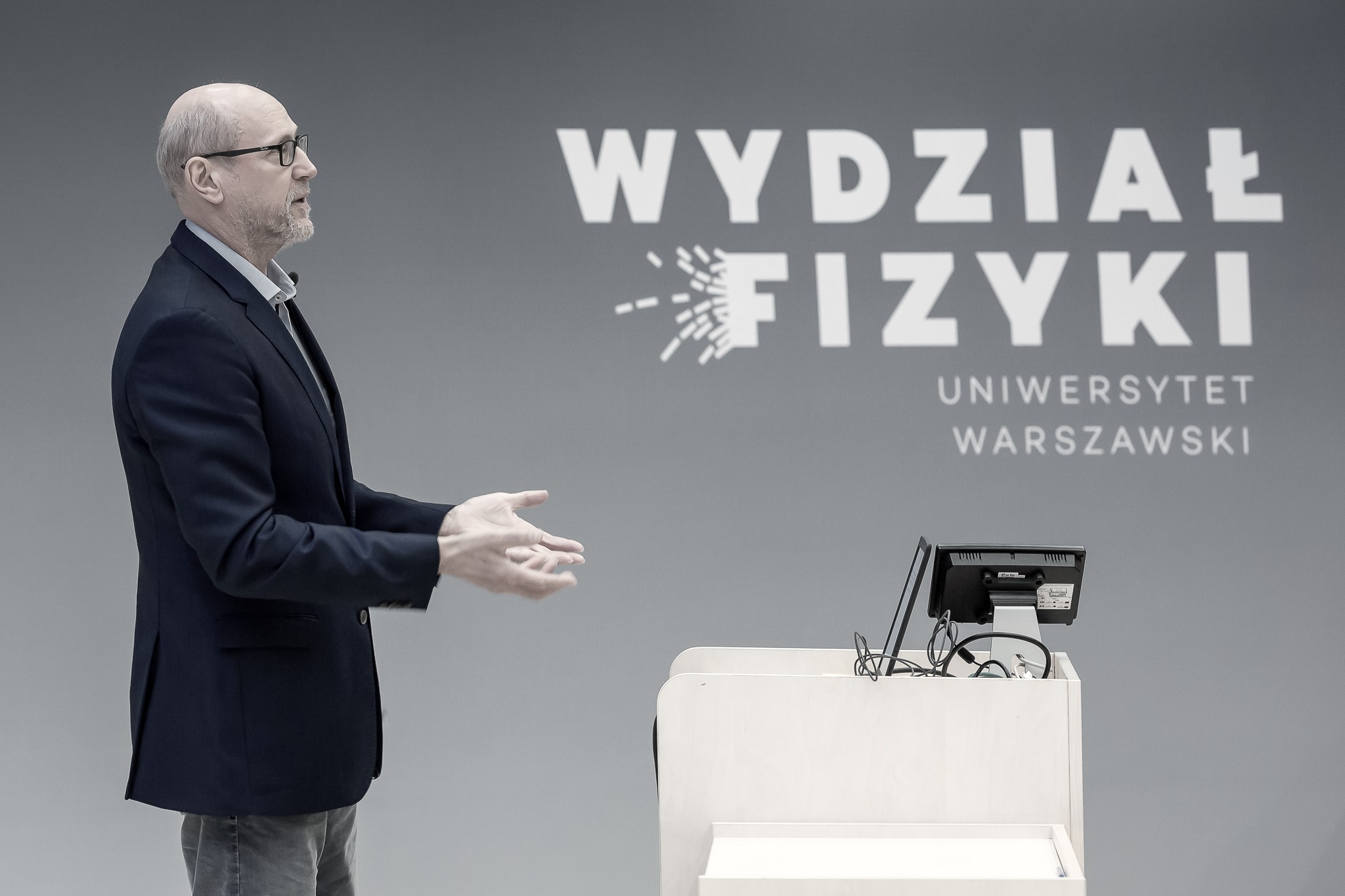
Professor Jerzy Lewandowski (1959 – 2024)
Jerzy Lewandowski was the Head of the Chair of Theory of Relativity and Gravitation, at the Institute of Theoretical Physics FUW. He was one of the founding members and the first President of the Polish Society of Relativity. He was an outstanding scientist, one of the creators of two important and rapidly developing research directions – Loop Quantum Gravity and Local Horizon Theory. He was a mentor to many young scientists. With his passing, our community has lost a very active and creative colleague, collaborator, and friend.
To honor the memory of Professor Jerzy Lewandowski, the portion of this year’s Theoretical Physics Symposium will be devoted to Theory of Relativity and Gravitation.
Program
Thursday, December 5th, 2024
FUW, lecture hall 0.06
2:00 PM – 2:15 PM Welcome & Opening
Zygmunt Lalak, Vice-Rector of UW
Wojciech Satuła, Dean of the Faculty of Physics
Krzysztof Byczuk, Director of the Institute of Theoretical Physics
Chair: Wojciech Kamiński
2:15 PM – 3:00 PM Andrzej Okołów Does time always slow down as gravity increases? Slides
3:00 PM – 3:45 PM Denis Dobkowski-Ryłko Isolated horizons – local approach to black holes Slides
3:45 PM – 4:15 PM Coffee break
Chair: Marek Demiański
4:15 PM – 5:00 PM Abhay Ashtekar Einstein’s Cosmos and the Quantum (on Zoom) Slides
5:00 PM – 5:45 PM Marek Szczepańczyk Science with gravitational waves in the era of LIGO-Virgo-KAGRA discoveries Slides
5:45 PM – 6:00 PM Rapid presentations
- Luca Cafaro Quantum and semiclassical black holes in Loop Quantum Gravity Slides
- Artur Krawczyk Foundations of conformal cyclic cosmology Slides
Friday, December 6th, 2024
FUW, lecture hall 0.06
Chair: Marcin Badziak
9:00 AM – 9:45 AM Bogumiła Świeżewska Probing early Universe using gravitational waves Slides
9:45 AM – 10:15 AM Krzysztof Turzyński Preheating and gravitational waves from geometrical destabilization Slides
10:15 AM – 11:00 AM Rapid presentations
- Mateusz Czaja Multiloop Corrections to the Leptonic Invariant Mass Spectrum in b->X_c l nu Decay Slides
- Jan Miśkiewicz Double beta decay in the nuclear density functional theory Slides
- Mateusz Majczak Scattering matrix approach to dynamical Sauter-Schwinger process Slides
- Pedram Karimi Matrix model on the crossroad of integrability and representation theory Slides
- Abhigyan Saha Knot Theory and Quantum Information Slides
- Stanisław Żukowski Growth and form of transport networks Slides
11:00 AM – 11:30 AM Coffee break
Chair: Michał Tomza
11:30 AM – 12:15 PM Maciej Lisicki Tales of tails. The hydrodynamics of microscale locomotion. Slides
12:15 PM – 1:00 PM Marcin Napiórkowski Bose-Einstein Condensation and Spontaneous Symmetry Breaking Slides
1:00 PM – 1:30 PM Rapid presentations
- Maciej Łebek Generalised BBGKY hierarchy for near-integrable dynamics Slides
- Tomasz Szawełło Injection parameters control the dynamics of flow pathway formation in porous media Slides
- Laura Meissner Stokes flow around a single sphere in anisotropic fluids Slides
- Jan Turczynowicz Encounter rate in marine snow dynamics Slides
1:30 PM – 3:00 PM Lunch break
Chair: Krzysztof Wohlfeld
3:00 PM – 3:45 PM Piotr Sułkowski Quantum fields, strings, knots, quivers, and physical mathematics Slides
3:45 PM – 4:30 PM Rafał Demkowicz-Dobrzański Quantum Metrology – from LIGO to quantum information and back Slides
4:30 PM – 5:05 PM Rapid presentations
- João Pedro Mendonça Superradiance-induced destabilization and suppression of the many-body order in strongly correlated light-matter systems Slides
- Stanisław Kurdziałek Fundamental limits and optimal protocols in noisy quantum metrology Slides
- Jakub Grabarczyk Solution of the one-dimensional Heisenberg model with the use of Bethe ansatz Slides
- Krystian Jabłonowski Topological Mott insulator in the odd-integer filled Anderson lattice model with Hatsugai-Kohmoto interactions Slides
- Mateusz Homenda Critical Fermi surfaces of two dimensional fermionic systems Slides
5:05 PM – 5:15 PM Closing: Katarzyna Krajewska
Invited Lectures
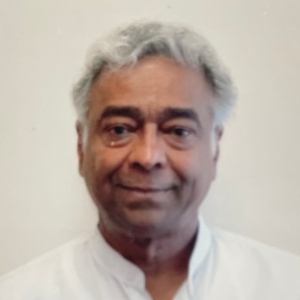
ABHAY ASHTEKAR, PENNSYLVANIA STATE UNIVERSITY
EINSTEIN'S COSMOS AND THE QUANTUM (on Zoom)
General relativity is a beautiful and radical theory through which gravity ceased to be a force and became a manifestation of space-time geometry. Furthermore, it has been highly successful. But it breaks down at singularities such as the Big Bang because it ignores quantum physics. But construction of a satisfactory unification of general relativity and quantum physics has turned out to be a truly challenging task because it requires an entirely new syntax to describe the extreme universe near singularities. We now need the quantum analog of Riemannian geometry. Jurek Lewandowski played a key role in developing this new syntax. After a brief discussion of why we have several distinct approaches to quantum gravity, I will focus on Loop Quantum Gravity which is based on quantum Riemannian geometry. I will explain how it leads to quantum space-times that extend Einstein’s classical continuum beyond its singularities. While this conceptual framework is rather abstract and involves novel mathematics, it also leads to predictions that can be tested observationally. As requested by the organizers, this talk should be accessible to non-experts, including students.
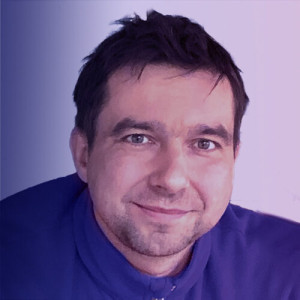
RAFAŁ DEMKOWICZ-DOBRZAŃSKI, IFT
QUANTUM METROLOGY - FROM LIGO TO QUANTUM INFORMATION AND BACK
Identifying the optimal quantum metrological protocols in presence of realistic noise may be challenging. Brute force methods usually do not allow to study models in the regimes interesting from practical point of view. In this talk I will present the state-of-the-art (and even a bit beyond..) tools that allow for an efficient search of the optimal protocols even in asymptotic regime of infinite available resources (particles, time, etc..) as well as methods to derive fundamental bounds that can certify their optimality.
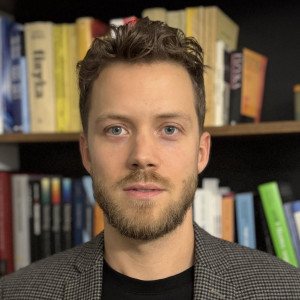
DENIS DOBKOWSKI-RYŁKO, UNIVERSITY OF GDAŃSK
ISOLATED HORIZONS - LOCAL APPROACH TO BLACK HOLES
One of the most exciting predictions of general relativity are black holes. Although the first exact black hole solution has been derived by Schwarzschild soon after Einstein proposed his field equations, the description of general stationary black holes required much more time and effort. Finally, in the 1960's, novel techniques in differential topology and geometry developed by Penrose, Hawking, Geroch and others provided the characterization of the global structure of spacetimes containing a black hole. Many properties of black holes have been discovered due to the global definition of the event horizon, among them are uniqueness, rigidity, no-hair and area theorems, black hole thermodynamics and Hawking effect. However, the realistic black holes are not static nor stationary, and their description should not require a teleological knowledge of the future of the whole spacetime. Therefore, an alternative, local description was proposed by Pajerski and Newman in 1971, and really gained popularity in the late 90's. This framework is referred to as isolated horizons and provides many analogical properties to global black holes.
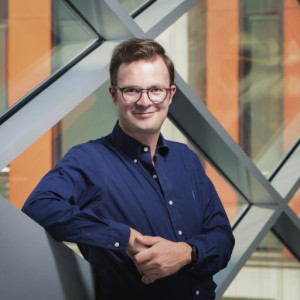
MACIEJ LISICKI, IFT
TALES OF TAILS. THE HYDRODYNAMICS OF MICROSCALE LOCOMOTION.
A look into the microworld reveals plethora of swimming microorganisms, which display a rich variety of shapes and swimming gaits. An important subgroup are eukaryotic ciliates, which use thousands of active microscale filaments covering their bodies to achieve propulsion. Despite this diversity, the physics of microscale flows imposes universal limitations on their propulsion strategies. In my talk, I will review the basic properties of Stokes flows and their consequences on swimming. Next, I will show examples of ciliary motion in both artificial and biological systems, which can be modelled using the formalism of Stokesian hydrodynamics with imposed surface activity. I will comment on the role of this activity in shaping the flows they use for swimming, sensing, feeding, and streaming.
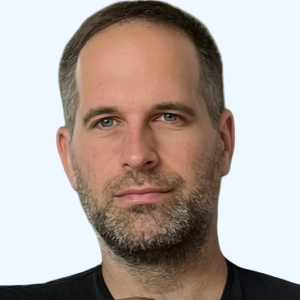
MARCIN NAPIÓRKOWSKI, KMMF
BOSE-EINSTEIN CONDENSATION AND SPONTANEOUS SYMMETRY BREAKING
The concept of spontaneous symmetry breaking (SSB) means quite generally that a symmetry of the Hamiltonian or Lagrangian of a system is not present in the state under consideration (usually a ground state or a thermal equilibrium state). In my talk I will discuss SSB in the context of Bose-Einstein Condensation. It turns out that for mean-field Bose gases these two concepts are equivalent.
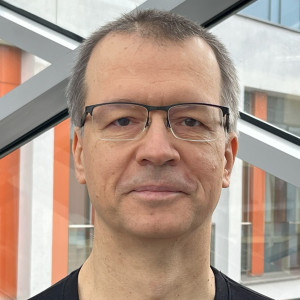
ANDRZEJ OKOŁÓW, IFT
DOES TIME ALWAYS SLOW DOWN AS GRAVITY INCREASES?
I will present a geometric description of gravitational time dilation and will critically analyze the claim that the time dilation ratio is correlated with strength of gravity.
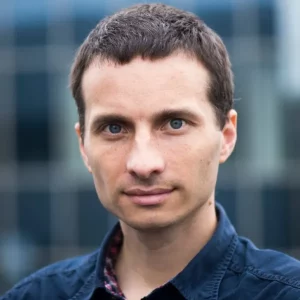
PIOTR SUŁKOWSKI, IFT
QUANTUM FIELDS, STRINGS, KNOTS, QUIVERS, AND PHYSICAL MATHEMATICS
I will present a field of research sometimes referred to as physical mathematics, which encompasses some specific aspects of quantum field theory, string theory, and related topics. As an illustration of this research area and an example of its powerful results, I will discuss a relation between knots and quivers, which arises in consequence of a duality between topological and supersymmetric quantum field theories.
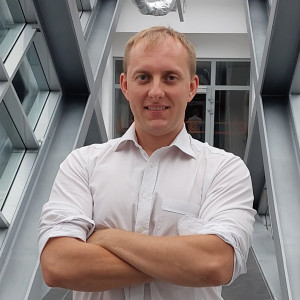
MAREK SZCZEPAŃCZYK, IFT
SCIENCE WITH GRAVITATIONAL WAVES IN THE ERA OF LIGO-VIRGO-KAGRA DISCOVERIES
The emerging field of Gravitational Wave Astrophysics has already demonstrated its potential to explore fundamental physics in extreme conditions that are inaccessible through terrestrial experiments, for example by strong tests of General Relativity or probing the extremely dense matter in neutron stars. However, we are just beginning to explore the Universe with gravitational waves. In each observing run of LIGO-Virgo-KAGRA, the number of detected gravitational-wave events is growing exponentially and the plans for future detectors are advancing. I will start with an overview of the current fourth observing run of LIGO-Virgo-KAGRA which has already observed around 160 gravitational-wave candidates. I will then discuss the future prospects. After this general introduction, I will talk about my research in LIGO-Virgo-KAGRA which is searching for exceptional gravitational-wave sources using model-independent methods. As I will show, these methods have already demonstrated the capabilities for discovery. We look for gravitational waves from new source populations or sources with special properties, for example. Such discoveries will likely challenge our understanding of the Universe and strongly impact other areas of Science.
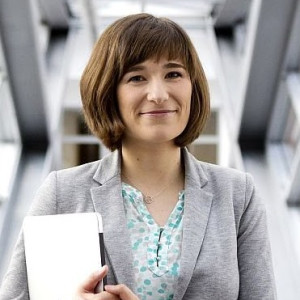
BOGUMIŁA ŚWIEŻEWSKA, IFT
PROBING EARLY UNIVERSE USING GRAVITATIONAL WAVES
Properties of fundamental interactions shape early stages of the evolution of the Universe, thus probing them would provide information complementary to high-energy experimental data. However, events prior to recombination and generation of the cosmic microwave background radiation, are inaccessible to traditional astronomy based on electromagnetic radiation. Fortunately, since almost a decade we have a new way of probing the Universe, via gravitational waves. Early-universe phenomena source stochastic gravitational wave background that can be used to probe the early times. In this talk, I will focus on a cosmological phase transition associated with symmetry breaking and its gravitational-wave signature. I will review the physics of the phase transition, explain how gravitational waves are produced and comment on the recent developments in this field, in particular, I will discuss supercooled pahse transitions which give promissing prospects of observation.

KRZYSZTOF TURZYŃSKI, IFT
PREHEATING AND GRAVITATIONAL WAVES FROM GEOMETRICAL DESTABILIZATION
Multi-field models of inflation with negative field-space curvature may lead to geometrical destabilization of non-adiabatic, or spectator, scalar perturbations. This phenomenon can occur at the end of inflation, e.g. in alpha-attractor models of inflation, or during inflation. Recent numerical lattice simulations shed light onto dynamics of the coupled scalar perturbations when such geometrical destabilization occurs. In the end-of-inflation geometrical destabilization, a rapid growth of the spectator perturbations can lead to preheating and associated production of gravitational waves, to the extent that alpha attractor T-models can be constrained or even ruled out by present observations. The middle-of-inflation geometrical destabilization turns out a short-lived phenomenon and a negative feedback loop prevents field fluctuations from growing indefinitely. As a result, fields undergoing geometrical destabilization are merely shifted to a new classical configuration corresponding to a uniform value of the spectator field within a Hubble patch.
Rapid Presentations
Luca Cafaro
Quantum and semiclassical black holes in Loop Quantum Gravity
I will discuss about quantum and semiclassical models of black hole collapse in spherical symmetry in a context of Loop Quantum Gravity. The aim is to show that those collapses lead to a quantum bounce which resolves the singularity of their classical counterpart. However, it is still highly debated what the outcome of such a bounce looks like. The most promising possibilities are either a black-to-white hole transition or the formation of a shockwave which can potentially destroy the black hole itself.
Mateusz Czaja
Multiloop Corrections to the Leptonic Invariant Mass Spectrum in b->X_c l nu Decay
In the determination of the CKM matrix element V_cb from inclusive B-meson decays, moments of the leptonic invariant mass constitute valuable observables. To evaluate them with sufficient precision, perturbative multiloop corrections to the analogous spectrum in the partonic b->X_c l nu decay are necessary. In this talk, I will present the recent progress in the computation of such corrections.
Jakub Grabarczyk
Solution of the one-dimensional Heisenberg model with the use of Bethe ansatz
In my work I present methods and techniques of solving the one-dimensional, anisotropic Heisenberg model – XXZ chain. At the beginning, the model, physical motivations to use it, and examples of materials well-described by this model are shown. Then the algebraic method of solving the model called Bethe ansatz is discussed. The key point is comparison of the three methods of solving the Hamiltonian. First, numerical diagonalization, which is easy to implement, but requires a lot of hardware resources. The next approach – Bethe equations decrease complexity of calculations, from exponential to linear size in number of nodes. However the equations themselves are highly nonlinear and solving them is challenging both numerically and algebraically. I am going to show the algebraic and numerical solutions of very small systems.
Mateusz Homenda
Critical Fermi surfaces of two dimensional fermionic systems
Quantum criticality in 2D fermionic systems lacks a clear theoretical description despite many years of intense studies. Systems that preserve translational symmetry are the most problematic due to large fluctuations across the entire Fermi surface, which becomes critical at the quantum critical point. During my talk, I will outline the primary challenges and Functional Renormalization Group approach to developing a comprehensive theory of critical Fermi surfaces.
Krystian Jabłonowski
Topological Mott insulator in the odd-integer filled Anderson lattice model with Hatsugai-Kohmoto interactions
In this work, we study an odd-integer filled Anderson lattice model incorporating odd-parity hybridization between orbitals with different degrees of correlations introduced in the Hatsugai-Kohmoto spirit. We demonstrate that a topological Mott insulating state can be realized in a considered model only when weak intra- and interorbital correlations involving dispersive states are taken into account. Interestingly, we find that all topological transitions between trivial and topological Mott insulating phases are not accompanied by a spectral gap closing, consistent with a phenomenon called first-order topological transition. Instead, they are signaled by a kink developed in spectral function at one of the time reversal invariant momenta.
Pedram Karimi
Matrix model on the crossroad of integrability and representation theory
Gaussian integral is undoubtedly the most common integral in physics. In this talk I will explain how character theory can help us to completely solve multifold Gaussian integral with logarithmic interaction, known as (beta deformed) Hermitian matrix models, at finite N. I will briefly explain why this is even possible and explain some connection to harmonic analysis on root system.
Artur Krawczyk
Foundations of conformal cyclic cosmology
Conformal cyclic cosmology (CCC) is a hypothesis proposed by sir Roger Penrose to address the question of what preceded the Big Bang. According to CCC there are an infinite series of aeons where the transition between them is possible under the assumption of conformal invariance. One of the key challenges is the presence of massive particles which break the conformal invariance due to their mass. We explore how the presence of a positive cosmological constant influences the mass of particles.
Stanisław Kurdziałek
Fundamental limits and optimal protocols in noisy quantum metrology
Quantum metrology is a promising field in quantum technologies, demonstrating significant advancements in precise measurements, as evidenced by its role in, e.g., enhancing the sensitivity of LIGO gravitational wave detectors. Our research focuses on the fundamental theoretical limits of quantum metrology, and developing tools to identify optimal measurement protocols in the presence of various noise types. In our recent works, we introduced a new type of tensor networks to efficiently simulate adaptive measurement strategies, and extended previosuly known results to correlated noise cases.
Maciej Łebek
Generalised BBGKY hierarchy for near-integrable dynamics
Bogoliubov–Born–Green–Kirkwood–Yvon (BBGKY) hierarchy of equations is an exact representation of dynamics of interacting many-body systems in terms of correlation functions. It is tractable for weakly non-ideal systems. I will present a new, generalized hierarchy valid also for weakly non-integrable systems, which in principle can be strongly correlated. The hierarchy is based on exact results for integrable models. I will also present numerical results benchmarking our formalism with exact simulations. Work in collaboration with Leonardo Biagetti, Miłosz Panfil and Jacopo de Nardis.
Mateusz Majczak
Scattering matrix approach to dynamical Sauter-Schwinger process
We present a newly developed method of describing the dynamical Sauter-Schwinger process using the scattering matrix approach and reduction formulas. The method is based on solving the Dirac equation with Feynman or anti-Feynman boundary conditions, which leads to the spin-resolved (helicity-resolved) probability amplitudes of created electrons or positrons. With this approach, after summing up over spin (helicity) configurations, we are able to reproduce the momentum distributions of produced particles calculated with other methods available in literature, such as with the Dirac-Heisenberg-Wigner approach. Our method, however, provides access to information about the phase of the probability amplitude, which allows us to investigate vortex structures in momentum distributions of created particles. In addition, we preserve the information about the spin (helicity) of created particles, which is not possible with other approaches.
Laura Meissner
Stokes flow around a single sphere in anisotropic fluids
Understanding the flow around small particles is of essential importance in applications ranging from colloidal suspensions to biological systems. In these exemplary applications, the low-Reynolds number regime is of specific interest, which is governed by the Stokes equation. It is well known that there is an exact analytical solution for incompressible Stokes flow around a single sphere immersed in an isotropic fluid described by a single shear viscosity. In this work, our goal is to extend this solution to anisotropic fluids. Not only does the anisotropy facilitate the presence of anisotropic shear and rotational viscosities, but also there is the possibility of having so-called odd viscosities when the anisotropy is odd under a time-reversal operation. Odd viscosities do not contribute to dissipation and can generate axial flow fields which are not present in ordinary Stokes flow. We envisage applications of our analysis to liquid crystals and chiral active fluids, which are governed by an even and odd time-reversal anisotropy, respectively.
João Pedro Mendonça
Superradiance-induced destabilization and suppression of the many-body order in strongly correlated light-matter systems
Light-matter interactions are fundamental for both probing and controlling quantum materials. Of particular interest is the case of nonclassical light, which not only enhances measurement precision but also opens pathways to novel quantum phenomena. A prominent example is the quantum battery, where multiple charge units couple coherently to a cavity, enabling the formation of polaritonic states as electrons interact with coherent photons within the cavity.
The Dicke model serves as a paradigmatic framework for studying light-matter interaction, known for its transition between normal and superradiant phases. Building on this, we explore a range of spin models that extend the Dicke framework, starting from the Ising model and increasing in complexity to compass models. To address these complex systems, we developed a novel method, combining non-Gaussian states and the Density Matrix Renormalization Group (NGS-DMRG), tailored for accurately investigating light-matter interaction models. Using NGS-DMRG, we reveal the effects of spin interactions on the normal-superradiant phase diagram, while also examining how quantum light influences the phase behavior of the spin system.
Jan Miśkiewicz
Double beta decay in the nuclear density functional theory
Double beta decay is the rarest radioactive process — it occurs only between several neighboring even-even nuclei that are close to valley of stability. A single-beta transition of an even-even nucleus into a neighboring odd nucleus is energetically forbidden. However, if it is followed immediately with a secondary decay, a daughter even-even nucleus is lighter than the mother and thus, the whole process turns out as energetically convenient. This reaction, often denoted as 2νββ is a weak-interaction process of the second order, hence it’s very rare.
Although the phenomenon itself is well known, the main focus is currently put on the high precision of experimental and theoretical predictions of half-lives and nuclear matrix elements for various nuclear models. Such information is of a great value to perform comprehensive study of yet unmeasured neutrinoless double beta decay, forbidden by the Standard model. The Warsaw nuclear group at the Faculty of Physics has been developing so-called No-Core Configuration Interaction framework (NCCI), which combines density functional approach enhanced with projection techniques and nuclear configuration mixing. Not only does this allow for restoration of good quantum numbers as isospin or angular momentum, but it also does not require any reference to the concept of nuclear core, simplifying tremendously construction of configuration space.
Currently, NCCI is being extensively used by the Warsaw group to evaluate nuclear matrix elements of the nuclei undergoing 2νββ. In the near future the focus will be put on application of the model to the neutrinoless variant of the decay. Estimation of the neutrinoless matrix elements within NCCI may provide further contraints on the 0νββ half-life range, which in result could improve the precision of the upcoming experimental projects concentrated on the observation of this so far hypothetical process.
Abhigyan Saha
Knot Theory and Quantum Information
In this talk I will introduce two generalizations of the entanglement entropy, which Is an intrinsic value associated to any quantum state, and show that they provide a novel quantification of a difference between corresponding links when applied to the quantum states that are constructed from links via Chern–Simons theory. We find that the first of these generalisations when applied to the simplest case of gauge group U(1) can even be identified as a pseudometric, while the imaginary part of the other generalisation can diagnose the mirror image of links.
Tomasz Szawełło
Injection parameters control the dynamics of flow pathway formation in porous media
When rock is infiltrated by a reactive fluid, the interplay of flow, transport, and chemical kinetics may lead to dramatic changes in the properties of the medium, often accompanied by the emergence of complex patterns. Evolution of these patterns can be controlled by injection parameters, such as flow rate or the concentration of the reactants. To understand the governing dynamics of this evolution, we model the porous medium as a system of interconnected pipes, with the diameter of each segment changing in proportion to local reactant consumption. We consider a set of coupled dissolution-precipitation processes and investigate the possible regimes. We benchmark our model against experimental results and explore the parameter space in search of the evolution characterized by continuous creation of new channels and maximum mineral replacement.
Jan Turczynowicz
Encounter rate in marine snow dynamics
Oceans are vital carbon sinks, absorbing roughly 30% of the anthropogenic carbon emissions. A portion of this carbon sediments, reducing its presence in the short-term global cycle. The primary source of this vertical current are sinking aggregates of dead phytoplankton, known as marine snow. To predict the sedimentation dynamics, it is crucial to describe encounters between sinking particles. Their collisions lead to aggregation and increase the sedimentation velocity, while encounters with free bacteria enhance dissolution, potentially slowing down sinking rates. Models for encounter rates involve two dominant mechanisms for particle interception, advection and diffusion, the relative importance of which depends on the sizes of colliding particles. While available studies often neglect one of the mechanisms or simply superpose them, this raises questions about their accuracy. Here, we show a systematic approach to modelling the collision rates depending on the particle sizes and their Peclet number.
Stanisław Żukowski
Growth and form of transport networks
Transport networks, such as vasculature and river networks, provide key functions in organisms and the environment. Our research focuses on the coupling between network growth and morphology. We analyze network geometries from nature and experiments, and try to understand growth mechanisms behind their formation. We then theoretically and numerically model their emergence. Our methods are applied to geological systems, such as river networks or karst conduits, and to living matter, such as capillary networks and the canal network of the jellyfish Aurelia.



























